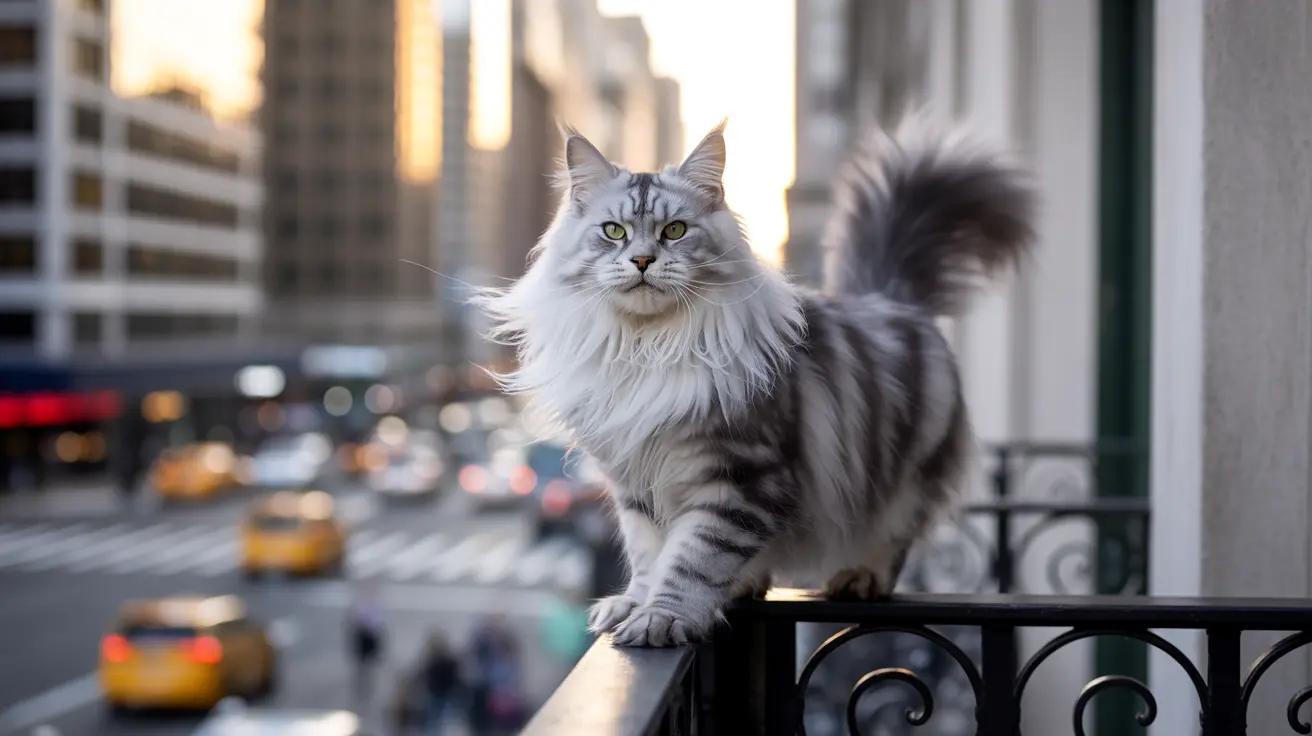Introduction
Cats are remarkable creatures known for their incredible agility and seemingly supernatural ability to survive falls from great heights. However, the question of how far can a cat fall without getting hurt isn't as straightforward as many pet owners might think. While cats do possess amazing physical adaptations that help protect them during falls, no height is completely safe, and various factors influence their chances of injury.
In this comprehensive guide, we'll explore the science behind cats' falling abilities, examine real research data, and provide crucial safety information for pet owners. Understanding these factors is essential for protecting our feline friends from potentially dangerous situations.
The Science Behind Cat Falls
Cats have evolved several remarkable physical adaptations that help them survive falls. Their most notable feature is the righting reflex, which allows them to twist their bodies mid-air and land on their feet. This reflex can activate in as little as 3 weeks after birth and works through their highly developed inner ear vestibular system.
Additionally, cats possess a flexible spine and no collarbone, allowing them to rotate their bodies quickly and efficiently during falls. Their muscular legs and special foot pads also act as natural shock absorbers, helping to distribute the impact force of landing.
Understanding Terminal Velocity and the "High-Rise Syndrome"
Research has shown that cats reach terminal velocity (maximum falling speed) after falling about seven stories, or roughly 70 feet. At this point, they typically spread their bodies out like a parachute, which helps slow their descent and better prepare for landing.
Interestingly, studies have found that cats falling from heights between 5-7 stories often suffer more severe injuries than those falling from greater heights. This phenomenon occurs because cats haven't reached terminal velocity in shorter falls and may not have enough time to properly position themselves for landing.
Factors Affecting Fall Survival
Height and Distance
While cats can potentially survive falls from impressive heights, no fall is completely safe. Falls from even moderate heights can result in serious injuries if conditions aren't optimal. The most dangerous falls typically occur between 2-7 stories, where cats haven't reached terminal velocity but are falling from significant heights.
Landing Surface
The surface a cat lands on plays a crucial role in determining injury severity. Soft surfaces like grass or bushes can significantly reduce impact force, while hard surfaces like concrete dramatically increase injury risk. Even short falls onto hard surfaces can potentially cause serious harm.
Cat's Physical Condition
A cat's age, weight, and overall health significantly influence their ability to survive falls unharmed. Young, healthy cats typically fare better than elderly, overweight, or sick cats. Physical fitness affects their ability to right themselves and absorb impact effectively.
Safety Measures and Prevention
The best approach to cat fall safety is prevention. Install secure window screens and ensure balconies are properly enclosed. Never leave windows open without screens, especially in high-rise buildings. Create a "catio" or enclosed outdoor space if you want to give your cat fresh air access.
For indoor environments, ensure furniture is stable and create safe climbing spaces that don't pose falling risks. Remember that even short falls can be dangerous if a cat lands awkwardly or on a hard surface.
Frequently Asked Questions
How far can a cat fall without getting seriously injured?
There is no guaranteed safe falling distance for cats. While they can potentially survive falls from great heights, any fall carries risk of injury. Even short falls can be dangerous if the cat lands incorrectly or on hard surfaces.
Why are cats sometimes more injured from falls of 2-6 stories than from higher falls?
In falls between 2-6 stories, cats haven't reached terminal velocity and may not have enough time to properly position themselves for landing. At greater heights, they reach terminal velocity and can better prepare their bodies for impact.
What physical adaptations help cats survive high falls?
Cats have several adaptations including their righting reflex, flexible spine, absence of a collarbone, powerful leg muscles, and specialized foot pads. These features work together to help them orient themselves during falls and absorb impact upon landing.
What should I do if my cat falls from a balcony or high place?
Immediately take your cat to a veterinarian, even if they appear uninjured. Internal injuries may not be immediately visible, and prompt medical attention can be life-saving.
How can I prevent my cat from falling out of windows or off balconies?
Install secure window screens and balcony netting, ensure all high areas are properly enclosed, and never leave windows open without proper safety measures in place. Consider creating a secure outdoor enclosure if you want to give your cat outdoor access.
Conclusion
While cats possess remarkable abilities to survive falls, it's crucial to understand that no fall is completely safe. The best approach is prevention through proper safety measures and awareness of potential risks. If your cat does experience a fall, always seek immediate veterinary attention, regardless of the height or apparent condition of your pet.






